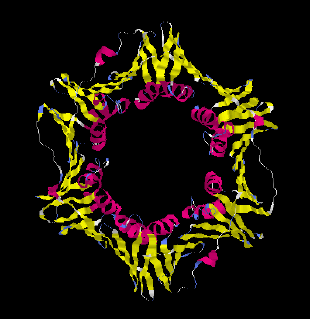



Computational Molecular Biology

Doug Brutlag, Rhiju Das, Gavin Sherlock, Mike Snyder, and Peter Karp
Doug Brutlag, Rhiju Das, Gavin Sherlock, Mike Snyder, and Peter Karp
Computational Molecular Biology is no longer taught for credit, but the course videos, slides and web pages will be kept intact for students who wish to review this material or faculty who wish to use the material in their own courses. Please send any comments and questions to brutlag@stanford.edu.
Computational Molecular Biology (Biochem 218) is a practical, hands-on approach to the field of computational molecular biology. The course is recommended for both molecular biologists and computer scientists desiring to understand the major issues concerning analysis of genomes, sequences and structures. Various existing methods will be critically described and the strengths and limitations of each will be discussed. There will be practical assignments utilizing the tools described. All homework and coursework will be submitted electronically. Prerequisites include an introductory molecular biology course at the level of Biology 41 or permission of the instructor. Students who have not had a course in molecular biology may acquire the necessary background by reading either Stryer's Biochemistry (8th edition by Berg, Tymoczko and Stryer) or Lewin's Genes IX.
Course Requirements
There will be several homework assignments utilizing the tools described in the lectures. All homework and final projects will be submitted in electronic form, as e-mail or e-mail attachments to brutlag@stanford.edu. A final paper will be required for the course that critically and constructively analyzes any area of computational molecular biology, bioinformatics or genomics. The final project may also present a novel application of existing tools or the development of some new or improved method.Examples of Previous Final Projects
Lecture Syllabus
Lecture
Topic
Lecturer
Slides
1
Genomics, Bioinformatics & Molecular Biology
2
Systematic Literature Search
3
Human Genome Project
4
Genome and Sequence Databases
5
Protein Sequence and Motif Databases
6
Sequence Alignment
7
Sequence Similarity Search
8
Multiple Sequence Alignment
9
Distance based Phylogenies
Building Protein Motifs and Models
11
Ab initio Protein Structure Prediction
12
Clustering Coordinately Regulated Genes
Discovering Gene Regulatory Signals
14
Gene Regulatory Modules and Networks
15
MicroRNA Regulatory Networks
16
Simple Nucleotide Polymorphisms (SNPs)
17
Genome Variations
18
Genome-Wide Association Studies
19
Metabolic Pathways and Analyses I
20
Metabolic Pathways and Analyses II
The video links in this table let you download quicktime videos of the lectures. Please right click on Video link and dowload the videos before viewing. You should also download the PDF file containing the slides by right clicking on the Slides link. You should have both files (Video and Slides) open when you watch the class video. The Video presents the video and audio, the Slide PDF gives you a high resolution version of the slides which are sometimes difficult to see in the video. Also, the URL links on the PDF file are all active so you can follow along the lecture more easily.
Homework Assignments
The directions for the homework assignments are given in this table and they take precedence over any directions given in the lectures or lecture slides. Changes in the web sites and algorithms that have occured since the lectures were recorded are reflected in the instructions below. Please click on the title of each homework assignment to see the specific directions.
** Last Updated September 12, 2015**
© Doug Brutlag 2015